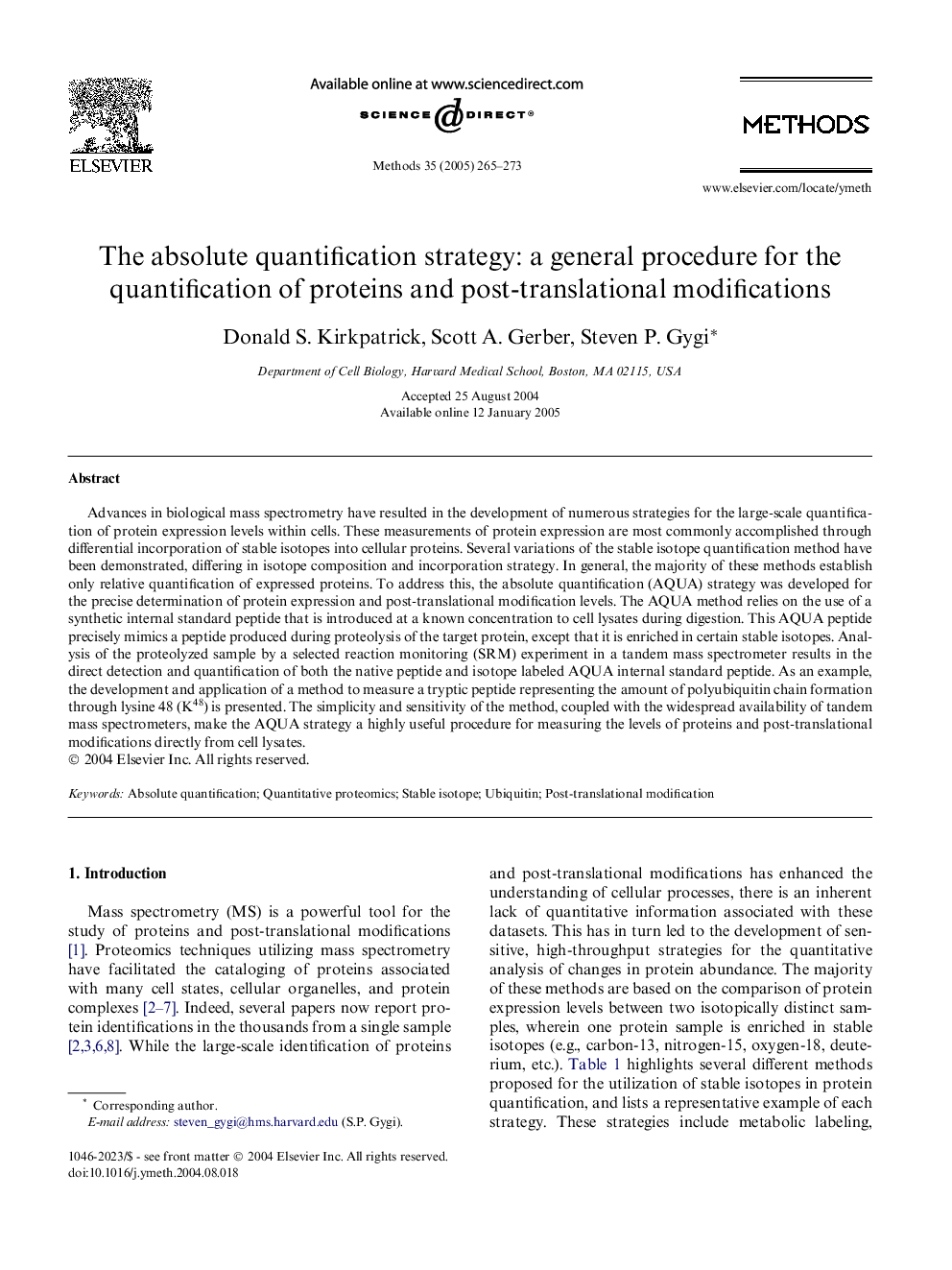| Article ID | Journal | Published Year | Pages | File Type |
|---|---|---|---|---|
| 10826576 | Methods | 2005 | 9 Pages |
Abstract
Advances in biological mass spectrometry have resulted in the development of numerous strategies for the large-scale quantification of protein expression levels within cells. These measurements of protein expression are most commonly accomplished through differential incorporation of stable isotopes into cellular proteins. Several variations of the stable isotope quantification method have been demonstrated, differing in isotope composition and incorporation strategy. In general, the majority of these methods establish only relative quantification of expressed proteins. To address this, the absolute quantification (AQUA) strategy was developed for the precise determination of protein expression and post-translational modification levels. The AQUA method relies on the use of a synthetic internal standard peptide that is introduced at a known concentration to cell lysates during digestion. This AQUA peptide precisely mimics a peptide produced during proteolysis of the target protein, except that it is enriched in certain stable isotopes. Analysis of the proteolyzed sample by a selected reaction monitoring (SRM) experiment in a tandem mass spectrometer results in the direct detection and quantification of both the native peptide and isotope labeled AQUA internal standard peptide. As an example, the development and application of a method to measure a tryptic peptide representing the amount of polyubiquitin chain formation through lysine 48 (K48) is presented. The simplicity and sensitivity of the method, coupled with the widespread availability of tandem mass spectrometers, make the AQUA strategy a highly useful procedure for measuring the levels of proteins and post-translational modifications directly from cell lysates.
Keywords
Related Topics
Life Sciences
Biochemistry, Genetics and Molecular Biology
Biochemistry
Authors
Donald S. Kirkpatrick, Scott A. Gerber, Steven P. Gygi,
